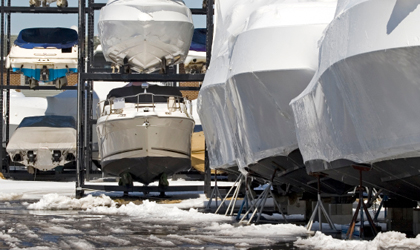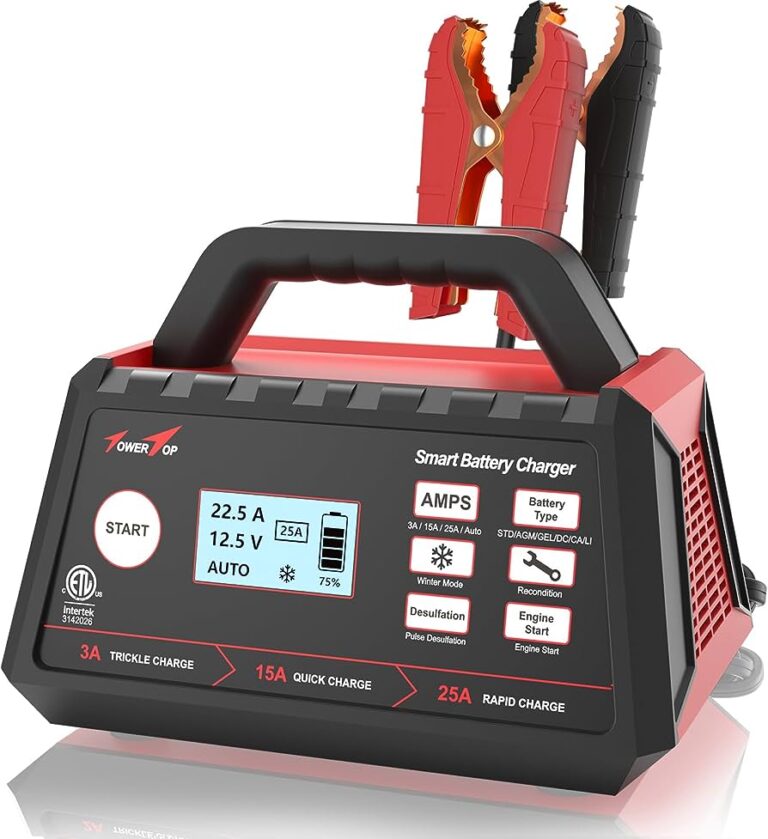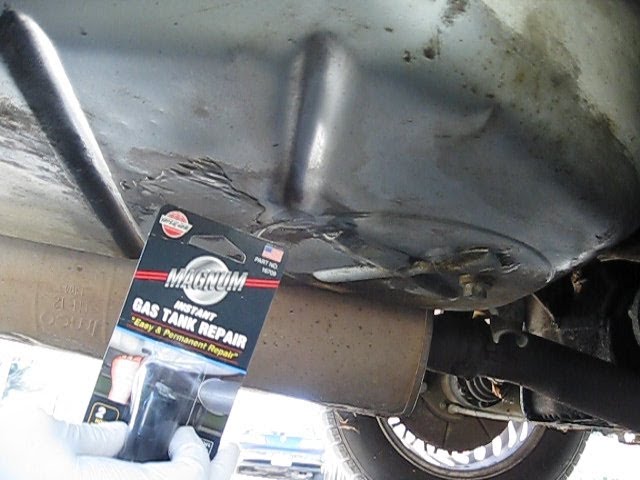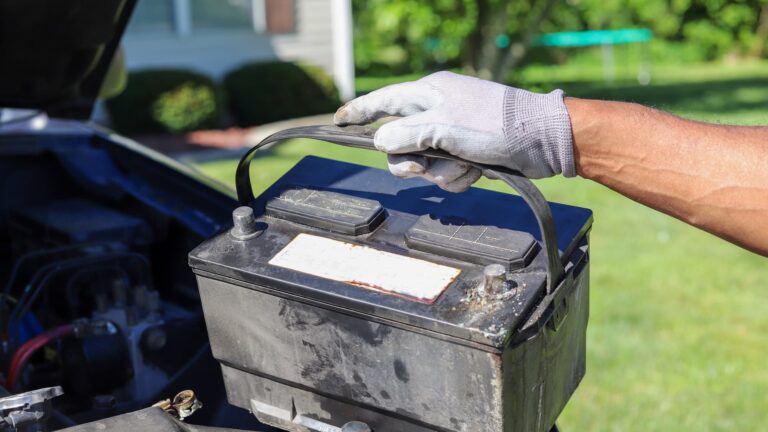Winterizing Your Boat: A Step-By-Step Guide
Winterizing Your Boat: A Step-By-Step Guide ensures that your boat is properly prepared for the winter season. This comprehensive guide provides a detailed walkthrough of the essential steps needed to protect your boat from the effects of freezing temperatures and harsh weather conditions.
From removing water from the engine block to draining the engine and manifold plugs, fogging the cylinders, and cranking the engine, this guide covers all the necessary procedures to winterize your boat effectively. By following these step-by-step instructions, you can ensure that your boat remains in good condition and is ready to hit the water again in the spring.
Preparing The Engine
To prepare the engine of your boat for winter, follow these essential steps outlined in our comprehensive guide. It includes instructions on changing the oil, removing water from the engine, adding fuel stabilizer, fogging the engine, replacing gear oil, and more.
Winterize your boat properly to protect its engine during the cold months.
:
To ensure that your boat’s engine remains in good condition during the winter months, it is essential to take the necessary steps for proper winterization. This comprehensive guide will walk you through each step, starting with preparing the engine. Follow these steps to ensure a smooth start-up when boating season returns:
Change The Engine Oil:
- Start by running the engine for a few minutes to warm up the oil, making it easier to drain.
- Turn off the engine and locate the oil drain plug. Place an oil catch pan beneath it.
- Carefully remove the drain plug using a wrench and allow the old oil to drain completely.
- Once the oil has fully drained, replace the drain plug and tighten it securely.
- Use a new oil filter and install it according to the manufacturer’s instructions.
- Add fresh, high-quality engine oil to the appropriate level as recommended by the manufacturer.
Remove The Water From Your Engine:
- By removing water from the engine, you’ll prevent freezing and potential damage.
- Start by disconnecting the hose from the water intake on the bottom of the boat.
- Locate the water drain plugs on the engine block and remove them.
- Allow all the water to drain out completely.
- Inspect the drain plugs for any signs of damage or wear and replace if necessary.
- Reinstall the drain plugs tightly to prevent water from entering during storage.
Add Fuel Stabilizer:
- Adding a fuel stabilizer to the gas tank will help prevent fuel degradation and other related issues.
- Fill the gas tank to approximately 95% capacity to allow for expansion during storage.
- Consult the manufacturer’s instructions for the appropriate amount of fuel stabilizer to add.
- Mix the fuel stabilizer with the gas in the tank thoroughly.
- Start the engine and let it run for a few minutes to distribute the treated fuel throughout the system.
Fog Your Engine:
- Fogging the engine helps protect internal components from corrosion during storage.
- With the engine running, locate the air intake and remove the flame arrestor.
- Slowly spray fogging oil into the intake while maintaining a steady RPM.
- Continue fogging until the engine starts to sputter and eventually stalls.
- Once the engine has stopped, spray a final burst of fogging oil into the intake.
- Replace the flame arrestor and ensure it is secured properly.
By following these steps to prepare your boat’s engine for winter, you’ll help safeguard against potential issues and ensure a smooth start-up when boating season returns. Remember to consult your boat’s user manual or seek professional assistance if you have any questions or concerns.
Stay tuned for the next section of our winterizing guide, where we’ll cover additional crucial steps.

Credit: www.carcovers.com
Protecting The Mechanical Components
Protecting the mechanical components of your boat is crucial when winterizing it. Follow our step-by-step guide to ensure that your boat is prepared for the colder months and avoid any potential damage to its engine and other vital parts.
Winterizing Your Boat: A Step-By-Step Guide
Winterizing your boat is crucial to protect it from the harsh winter weather and ensure it’s ready to hit the water once spring arrives. One important aspect of winterizing is protecting the mechanical components of your boat. Here are two key steps to follow:
Replace Your Gear Oil:
- Drain the existing gear oil from the lower unit of your boat’s outboard motor or sterndrive.
- Use a gear oil pump to refill the lower unit with fresh, high-quality gear oil.
- Make sure the new gear oil reaches the recommended level as specified by your boat’s manufacturer.
- Check for any leaks and address them promptly to prevent damage to the gears and bearings.
Lubricate Your Grease Fittings:
- Locate all the grease fittings on your boat’s mechanical components, such as the steering system, propeller shaft, and trailer wheel bearings.
- Use a grease gun to apply marine-grade grease to each fitting.
- Pump the grease until you see fresh grease oozing out, indicating that the old grease has been pushed out.
- Wipe away any excess grease to prevent dirt and debris from sticking to it.
By following these steps to protect the mechanical components of your boat, you can ensure that they remain in optimal condition throughout the winter months. This will not only extend their lifespan but also save you from costly repairs down the line.
Remember, proper winterization is essential for keeping your boat in top shape, so be sure to refer to your boat’s owner’s manual for specific instructions and recommendations based on your boat’s make and model. Stay tuned for the next section on winterizing your boat’s hull and exterior.
Preparing The Boat For Storage
Prepare your boat for storage by following this step-by-step guide on winterizing your boat. This includes changing the engine oil, removing water from the engine, adding fuel stabilizer, fogging the engine, replacing gear oil, lubricating grease fittings, and thoroughly cleaning the boat.
Before you put your boat into storage for the winter, it’s important to properly prepare it to avoid any damage or issues that can arise during the off-season. Follow these steps to ensure your boat is ready for storage:
Clean The Boat Thoroughly:
- Remove all personal belongings and equipment from the boat.
- Empty all compartments and storage areas.
- Dispose of any perishable items, such as food or beverages.
- Give the boat a thorough wash, including the hull, deck, and interior.
- Remove any stains or marks on the surfaces.
- Scrub the boat with an appropriate cleaner to remove any dirt or grime.
- Rinse the boat thoroughly to remove all cleaning products.
- Dry the boat completely to prevent any moisture-related issues during storage.
Don’T Leave Anything Behind:
- Check all compartments and storage areas again to ensure nothing has been left behind.
- Remove any electronics, such as fish finders or navigation systems, to prevent theft or damage.
- Take out any removable cushions or upholstery and store them in a dry place.
- Remove all valuables, including fishing gear, life jackets, and personal items.
- Empty and clean the refrigerator and freezer if your boat has one.
- Disconnect the boat’s battery and store it in a cool, dry location.
- Check for any signs of pests or insects and take appropriate measures to prevent infestations.
- Lock all hatches, windows, and doors to ensure the boat is secure.
By following these steps, you can ensure that your boat is properly prepared for storage during the winter months. Taking the time to clean the boat thoroughly and double-checking that nothing is left behind will help protect your boat and ensure it’s ready to hit the water when the next boating season arrives.
Frequently Asked Questions For Winterizing Your Boat: A Step-By-Step Guide
How Do You Winterize A Boat Step By Step?
Follow these steps to winterize your boat: 1. Change the engine oil. 2. Remove water from your engine. 3. Add fuel stabilizer. 4. Fog your engine. 5. Replace the gear oil. 6. Lubricate grease fittings. 7. Thoroughly clean the boat. 8.
Don’t leave anything behind.
How Do You Winterize A Boat Checklist?
To winterize your boat, follow this checklist: 1. Block up your boat. 2. Flush the engine. 3. Fog the engine. 4. Drain water lines. 5. Use antifreeze for inboard engines. 6. Check and replace fluids. 7. Wash and detail your boat.
By following these steps, you’ll ensure that your boat is prepared for winter and ready to go in the spring.
How Do I Winterize My Boat Myself?
To winterize your boat yourself, follow these steps: 1. Change the engine oil to avoid old oil sitting during winter. 2. Remove water from the engine and drain the water lines. 3. Add fuel stabilizer to prevent fuel deterioration. 4. Fog your engine to protect against corrosion.
5. Replace your gear oil for proper lubrication. 6. Lubricate grease fittings to ensure smooth operation. 7. Clean your boat thoroughly to prevent dirt buildup. 8. Double-check and remove any personal belongings. Remember, winterizing your boat is crucial to protect it from damage during the cold months.
Do You Winterize A Boat With Antifreeze Or Drain?
To winterize a boat, you can either use antifreeze or drain the water.
Conclusion
As winter approaches, it’s crucial to properly prepare your boat for the colder months. By following our step-by-step guide, you can ensure that your boat remains in top condition and is ready for the next boating season. Start by changing the engine oil to remove any old oil that may sit for months.
Remove water from the engine and add fuel stabilizer to prevent fuel degradation. Fogging the engine helps protect it from rust and corrosion. Replace the gear oil and lubricate grease fittings to maintain smooth operation. Thoroughly clean your boat, inside and out, and double-check that nothing is left behind.
By winterizing your boat using these steps, you can prolong its lifespan and save yourself time and money on repairs in the long run. So don’t forget to follow these guidelines and ensure a worry-free boating experience next season. Happy winterizing!






